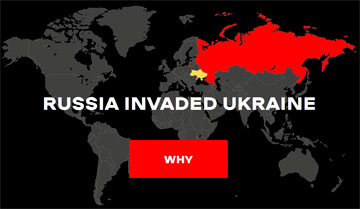Multiple vulnerabilities in Oracle Communications Element Manager
| Risk | High |
| Patch available | YES |
| Number of vulnerabilities | 3 |
| CVE-ID | CVE-2025-48988 CVE-2024-47606 CVE-2025-48734 |
| CWE-ID | CWE-400 CWE-190 CWE-284 |
| Exploitation vector | Network |
| Public exploit | Public exploit code for vulnerability #1 is available. |
| Vulnerable software |
Oracle Communications Element Manager Web applications / Other software |
| Vendor | Oracle |
Security Bulletin
This security bulletin contains information about 3 vulnerabilities.
1) Resource exhaustion
EUVDB-ID: #VU111161
Risk: Medium
CVSSv4.0: 7.7 [CVSS:4.0/AV:N/AC:L/AT:N/PR:N/UI:N/VC:N/VI:N/VA:H/SC:N/SI:N/SA:N/E:P/U:Green]
CVE-ID: CVE-2025-48988
CWE-ID:
CWE-400 - Resource exhaustion
Exploit availability: Yes
DescriptionThe vulnerability allows a remote attacker to perform a denial of service (DoS) attack.
The vulnerability exists due to application does not properly control consumption of internal resources when handling multipart requests. A remote attacker can trigger resource exhaustion and perform a denial of service (DoS) attack.
MitigationInstall update from vendor's website.
Vulnerable software versionsOracle Communications Element Manager: 9.0.0 - 9.0.4
CPE2.3- cpe:2.3:a:oracle:oracle_communications_element_manager:9.0.0:*:*:*:*:*:*:*
- cpe:2.3:a:oracle:oracle_communications_element_manager:9.0.1:*:*:*:*:*:*:*
- cpe:2.3:a:oracle:oracle_communications_element_manager:9.0.2:*:*:*:*:*:*:*
https://www.oracle.com/security-alerts/cpujul2025.html?534788
Q & A
Can this vulnerability be exploited remotely?
Yes. This vulnerability can be exploited by a remote non-authenticated attacker via the Internet.
Is there known malware, which exploits this vulnerability?
No. We are not aware of malware exploiting this vulnerability. However, proof of concept for this vulnerability is available.
2) Integer overflow
EUVDB-ID: #VU101245
Risk: High
CVSSv4.0: 5.7 [CVSS:4.0/AV:L/AC:L/AT:N/PR:N/UI:A/VC:H/VI:H/VA:H/SC:N/SI:N/SA:N/E:U/U:Amber]
CVE-ID: CVE-2024-47606
CWE-ID:
CWE-190 - Integer overflow
Exploit availability: No
DescriptionThe vulnerability allows a remote attacker to execute arbitrary code on the target system.
The vulnerability exists due to integer overflow in the MP4/MOV demuxer and memory allocator. A remote attacker can pass specially crafted data to the application, trigger an integer overflow and execute arbitrary code on the target system.
Successful exploitation of this vulnerability may result in complete compromise of vulnerable system.
MitigationInstall update from vendor's website.
Vulnerable software versionsOracle Communications Element Manager: 9.0.0 - 9.0.4
CPE2.3- cpe:2.3:a:oracle:oracle_communications_element_manager:9.0.0:*:*:*:*:*:*:*
- cpe:2.3:a:oracle:oracle_communications_element_manager:9.0.1:*:*:*:*:*:*:*
- cpe:2.3:a:oracle:oracle_communications_element_manager:9.0.2:*:*:*:*:*:*:*
https://www.oracle.com/security-alerts/cpujul2025.html?534788
Q & A
Can this vulnerability be exploited remotely?
Yes. This vulnerability can be exploited by a remote non-authenticated attacker via the Internet.
Is there known malware, which exploits this vulnerability?
No. We are not aware of malware exploiting this vulnerability.
3) Improper access control
EUVDB-ID: #VU111165
Risk: Medium
CVSSv4.0: 1.7 [CVSS:4.0/AV:N/AC:L/AT:P/PR:N/UI:N/VC:L/VI:L/VA:L/SC:N/SI:N/SA:N/E:U/U:Green]
CVE-ID: CVE-2025-48734
CWE-ID:
CWE-284 - Improper Access Control
Exploit availability: No
DescriptionThe vulnerability allows a remote attacker to gain unauthorized access to otherwise restricted functionality.
The vulnerability exists due to improper access restrictions to enum properties. If an application using Commons BeanUtils passes property paths from an external source directly to the getProperty() method of PropertyUtilsBean, an attacker can access the enum’s class loader via the “declaredClass” property available on all Java “enum” objects. Accessing the enum’s “declaredClass” allows remote attackers to access the ClassLoader and execute arbitrary code. The same issue exists with PropertyUtilsBean.getNestedProperty().
MitigationInstall update from vendor's website.
Vulnerable software versionsOracle Communications Element Manager: 9.0.0 - 9.0.4
CPE2.3- cpe:2.3:a:oracle:oracle_communications_element_manager:9.0.0:*:*:*:*:*:*:*
- cpe:2.3:a:oracle:oracle_communications_element_manager:9.0.1:*:*:*:*:*:*:*
- cpe:2.3:a:oracle:oracle_communications_element_manager:9.0.2:*:*:*:*:*:*:*
https://www.oracle.com/security-alerts/cpujul2025.html?534788
Q & A
Can this vulnerability be exploited remotely?
Yes. This vulnerability can be exploited by a remote non-authenticated attacker via the Internet.
Is there known malware, which exploits this vulnerability?
No. We are not aware of malware exploiting this vulnerability.
